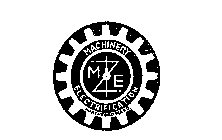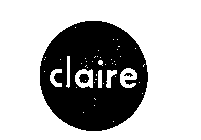13. NEURALNET FILTER LONG-SEARCH
13.1 Long-Search File Structure
13.2 TradeMark Example
13.3 Keyword-Search vs Content-Based Search
13. NeuralNet Filter Long-Search
The limit for Short-Search is 1,000 images. There is no technical limit for the Long-Search, except your hardware limits. Long-Search can search millions of images.
The difference between Long-Search and Short-Search is the Short-Search does not look into the sub-directories and the Long-Search does look into the sub-directories.
13.1 Long-Search File Structure
The file structure looks like this:
SearchDir
dumyfile.jpg
Dir0000Dir0000_000.jpgDir0001
Dir0000_001.jpg
Dir0000_002.jpg
�Dir0000_999.jpg
Dir0001_000.jpgDir0002
Dir0001_001.jpg
Dir0001_002.jpg
�Dir0001_999.jpg
Dir0002_000.jpg
Dir0002_001.jpg
Dir0002_002.jpg
�Dir0002_999.jpg
In the Long-Search, the search-directory can have many sub-directories.
In this version, the default number is 3,000 sub-directories. All images
to be searched must be in the sub-directories. Each sub-directory can
have up to 1,000 images. If your search-directory has 3,000 sub-directories
and each sub-directory has 1,000 images, then you can search up to 3,000,000
images. Please leave one file in the search-directory. (In the above
structure, it is �dumyfile.jpg�) The purpose of this file is for the ImageFinder
to select the directory when you use the Browse button.
All sub-directories must only be one level deep. If a sub-directory, x, has another sub-directory, y, then the images in sub-directory, y, will not be searched. If you must go more than 1 level deep, you have to use the File-Search.
When operating the ImageFinder, the only difference between Short-Search and Long-Search is to click a different command. All the parameters used are the same as the File-Search and Short-Search.
Now we will introduce a TradeMark Search Example. The directory is �.\Uspto72\�, which has about 3,000 images.
Problem Definition:
Job: A trademark attorney wants to make sure the trademark is new.
Problem: The trademark in currently indexed by text. Beyond the text search, the visual search is currently very labor and time intensive.
Solution: Attrasoft ImageFinder will exclude 99.9%
of the irrelevant images in visual search, which translates into tremendous
efficiency and productivity gains.

Figure 13.1 The key image, ./uspto72/ 72158547.gif.
Input
Key: ./uspto72/uspto_72_018/72158547.gif;
Search dir: ./uspto72/.
Parameters
NeuralNet Filter Parameters:
Blurring = 10
Sensitivity = 45
Internal Weight Cut = 30
External Cut = 300000
Operation:
- Click the �Key Segment� button and enter �./uspto72/uspto_72_018/72158547.gif�;
- Click the�Neural/Long Search Directory� command and enter a search directory, E:/uspto72/;
- Set the NeuralNet parameters:
- Click the �NeuralNet/Train� button to train the filter;
- Click the �NeuralNet/1:N Long Search� button to make a Long-Search;
- The result is in a web page;
- If you want to sort, click the �Sort� button. The first 200 items in the sorted list will also be printed in the text area.
- NeuralNet Filter Parameters:
Blurring = 10
Sensitivity = 45
Internal Weight Cut = 30
External Cut = 300000
Total Images: 4000
#Images Retrieved: 5
Percentage Retrieved: 0.1%C:/�/uspto72/uspto_72_018/72158547.gif 128000000
C:/�/uspto72/uspto_72_033/72246506.gif 812500
C:/�/uspto72/uspto_72_029/72222807.gif 504000
C:/�/uspto72/uspto_72_025/72197083.gif 440000
C:/�/uspto72/uspto_72_025/72197801.gif 320000

72246506.gif 812500

72197083.gif 440000
Figure 13.2 Two Matched Images.
13.3 Keyword-Search vs Content-Based Search
ImageFinder provides the content-based search. The ImageFinder is further divided into:
- Feature Space Recognition Alone (BioFilter, Neural Filter);
- Feature Space and Input Space Recognition (BioFilter, Neural Filter, NeuralNet Filter File- Search);
- Input Space Recognition Alone (NeuralNet Filter, Short-Search and Long-Search).
An imagebase or image database is an image file cabinet. An imagebase is a set of tables. A table is a set of records. A record consists of a set of fields. A field contains text or links to images. Obviously, you can insert, update, delete, and retrieve images. The most important feature of an imagebase is to retrieve images efficiently.
You can use the DBMS software for the following functions:
- Insert
- Update
- Delete
- Keyword Retrieval
- Content-Based Image Retrieval.